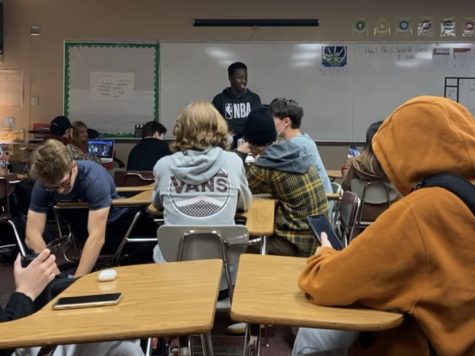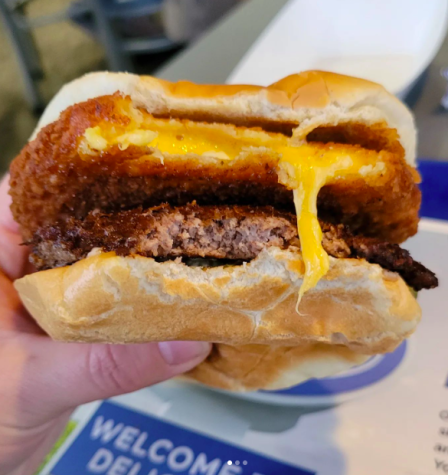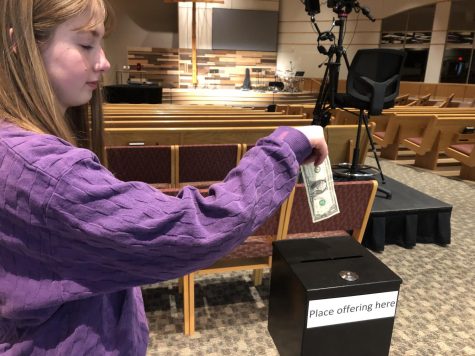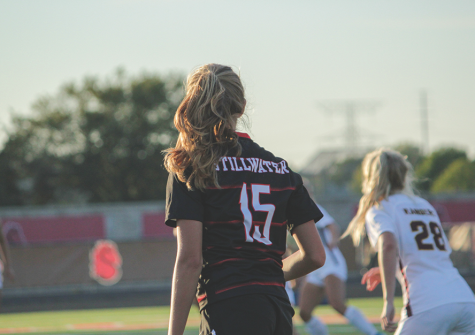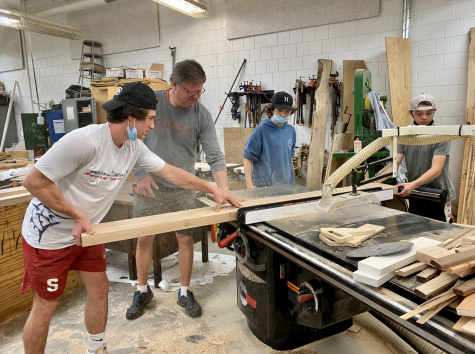Fake news takes over real news
May 24, 2017
Misleading information has always been a part of society, but after being mixed with major platforms of social media has allowed a massive wave of fake news and unreliable sources. After a peak in 2016 that lead to backlash for major media companies, fake news and has given a negative reputation to the industry education must take place to stop the spread.
Fake news has been able to become more popular largely due to social media. Statistics show that 81 percent of Americans have a social media account making it a great platform to spread false information. Before social media, people would buy articles published by journalists who are trusted compared to now where anybody can contribute to the conversation weather true or false information.
“You used to be able to tell if the news was real or fake when you went to the store, but now anybody can tweet any and people will believe it,” journalism teacher Laurie Hansen said.
The fake news conversation hit its peak during the 2016 presidential election. By the end of the race 1.4 million more Americans engaged in fake news then mainstream news on social media. These public accusations however include the whole journalism industry leaving the legit journalist mixed in with the fake ones.
“Fake news is nothing new it has just became more popular in the last election year tied in with social media,” social studies teacher Molly Siebert said.
With the fake news industry on the rise, the best way to stop the spread is to educate. After fake news was debated and brought to the public’s attention after the 2016 election it has made people more careful about what they read. Since fake news is designed to look like real news it is critical for people to be be to detect fake news.
“I think with the rise of fake news it has made people more skeptical about what they read because they are more educated on the topic,” Seibert said.
As fake news is getting more popular it has not only taken away from the journalism industry, but has been able to grow as an industry as well. Even though the amount of fake news is increasing some people believe that others will still look for reliable sources.
“I don’t think that the fake news industry will become bigger than the mainstream news, I think people will always look for legit journalism,” Hansen said.
Although the two categories share some similarities, they are two separate categories. People often mistake fake news with biased news. Biased journalism does not violate the First Amendment, but it is not an effective way to portray news accurately to an audience. Major news companies have a political bias such as Fox News reporting in favor of liberal views. This often angers viewers because they are not receiving the whole story.
“Many people interpret bias news as fake news, and I think that’s what has taken away from some of the credibility but bias news can also give you different opinions,” Siebert said.
Fake news has been able to become more popular through the platform of social media, but at the same time taken away the professionalism of the journalism industry. After it is all time peak in 2016 more education on the topic must take place as reliable sources become harder to find.
http://www.telegraph.co.uk/technology/0/fake-news-origins-grew-2016/


